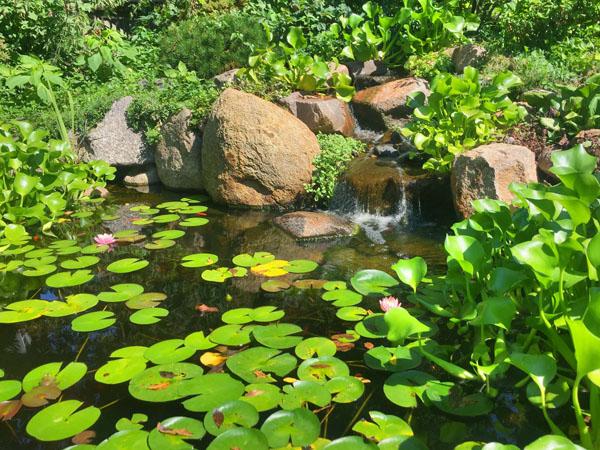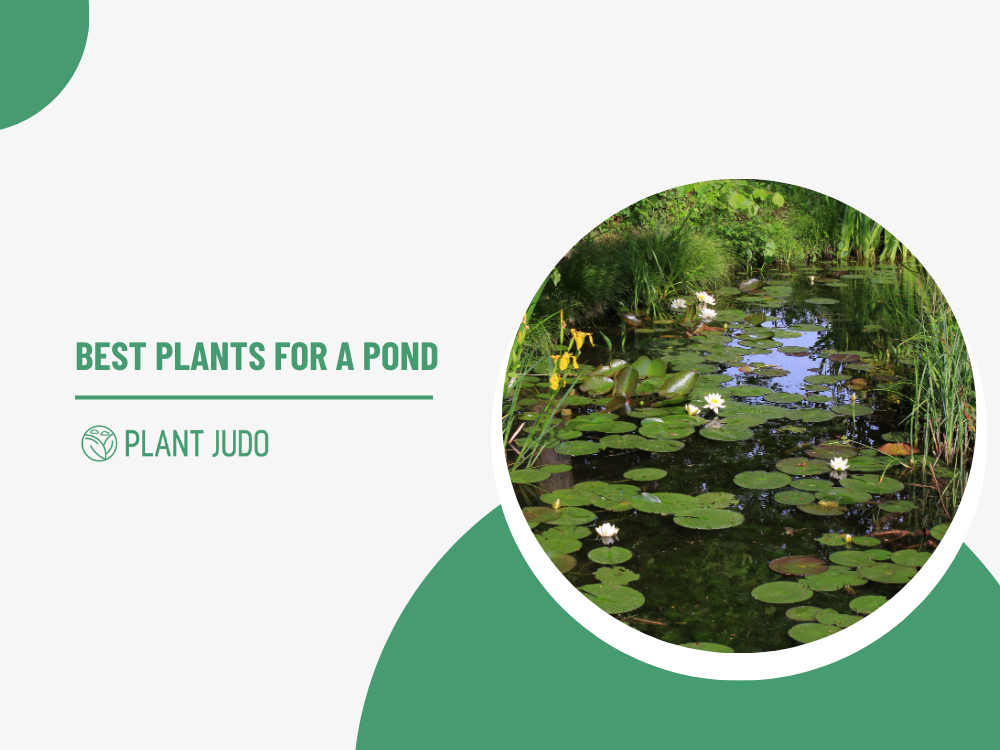It is possible to grow aquatic plants in a garden pond regardless of their size. Plants that grow in ponds do more than look good; they provide helpful surface cover and shelter for aquatic wildlife as well. Oxygenating plants can also improve water clarity.
It would be best if you chose plants that are suited for the space you have available and grow them in aquatic compost, topped with grit. Depending on the species, some plants require only 2.5cm of water above their crown, while others require 30cm or more.

Pond Plants: What You Need to Know
Besides enhancing the beauty of ponds, these plants also prevent green algae from growing in them. In ponds, they provide shade and consume nutrients.
As a result, algae blooms are unable to grow due to a lack of sunlight and nutrients for photosynthesis. Plants in ponds, meanwhile, use up all the sunlight for their photosynthesis process, which releases oxygen into the water. Water quality improvement in ponds.
In Addition To Their Unique Benefits, Best Pond Plants Come In A Variety Of Types.
Zone 1: Bog Plants (Planting Depth: 0-15cm)
Although bog plants are technically not aquatic plants, they provide an exciting border for ponds. Because they love moisture, they thrive on land near pond edges. It is also referred to as zone 1. The presence of bog plants near water also encourages wildlife.
Zone 2: Marginal Plants (Planting Depth: 0-15cm)
A pond that bog plants created can be enhanced by marginal plants, which add depth to the border and shape of the pond. Marginals thrive in shallow water, so they should be planted in zone 2 of a pond. The flowering part of these plants emerges from the water, which is why they are commonly called emergent plants.
Zone 3: Deep Marginal Plants (Planting Depth: 15-40cm)
Depending on the depth of the pond water, marginal plants can thrive. Deep marginal plants can tolerate shallow water. This causes them to cross over into zone 3, which is slightly deeper. This plant also emerges and flowers above water, like marginal plants in zone 2.
Zone 4: Deep Water + Oxygenating Plants (Planting Depth: Over 40cm)
These plants are suited to the most profound areas of ponds and can float, emerge, or be submerged within the water. They do the most work when it comes to removing excess nutrients from pond water and replenishing it with oxygen, which is why they’re the most valuable plants in a pond for a healthy ecosystem. Violets, hawthorns, and lilies are examples of water plants. When dissolved oxygen levels are naturally low in summer, consider adding oxygenating plants to your pond.
Zone 5: Floating Plants (Planting Depth: N/A)
Pond water is filled with floating plants, as their name suggests. A plant basket is not connected to an underwater stem system. Adding these to a pond will make it look more attractive and require little maintenance. As well as providing shade for fish, floaters also provide a resting place for wildlife like frogs or newts outside of pond water.
Tips for planting ponds
What to look for when choosing plants
It doesn’t matter if you want to decorate your pond or if you hope to improve the pond’s natural balance. Consider the size and location of the garden when choosing plants.
It is unlikely that you will need many floating plants for shade if your pond is located under a tree, for instance. If you have a wildlife pond, limit the types of plants you can submerge. By doing so, excess foliage is prevented from tangling wildlife.
Plant after researching, planning, and preparing!
The best time to plant
Spring and early summer are the best times for aquatic plants to establish and grow. Increased sunlight exposure and warmer temperatures benefit them.
Ponds can be planted in autumn or winter, but you should expect them to remain dormant until spring when the weather is more conducive.
Maintaining a tidy environment.
Keeping your pond tidy is essential unless you want to spend time maintaining it.
Plant baskets should be anchored with stones at the bottom to support deep plants. As a result, they will be kept in a stable location and will not be damaged by water movement.
Keeping your plants tidy once they’re established requires trimming excess foliage (and adding it to a compost heap) so that organic waste won’t be added to it.
Conclusion
Water clarity can be improved by adding plants to a pond, which adds visual interest and encourages wildlife. Plants contribute significantly to the enjoyment of both you and visiting or resident wildlife of your pond.
FAQs
Is there a plant that is the best oxygenator for ponds?
Water lilies are the best plant for oxygenating ponds.
In a small pond, what plants can grow?
It is possible to grow a large number of aquatic plants in the pond. The pond can also support plants that are not aquatic but can still grow there.
– Floating water lily
– Duckweed
– Water hyacinth
– Water lettuce
Is it possible to grow typical plants in a pond?
Ponds are bodies of standing water. Generally, the term refers to a natural lake or reservoir, but dams can also create artificial lakes and reservoirs for hydroelectric generation.
A pond serves many purposes, including irrigation, water supply, and recreation. The water can also be contaminated with sewage and industrial waste in some places. The size of ponds can range from small backyard pools to large artificial reservoirs that supply millions of people with drinking water.
Is pond water kept clean by the pond plants?
Many types of plants thrive in natural ponds that are found in the middle of forests. This is because the water in these ponds is cleaner than the water found in a stream or river.
Pond plants can keep the water clean by filtering out pollutants and providing oxygen to the pond. The plants also help to control pathogens, algae, and other harmful organisms that could harm fish and other animals that live nearby.


